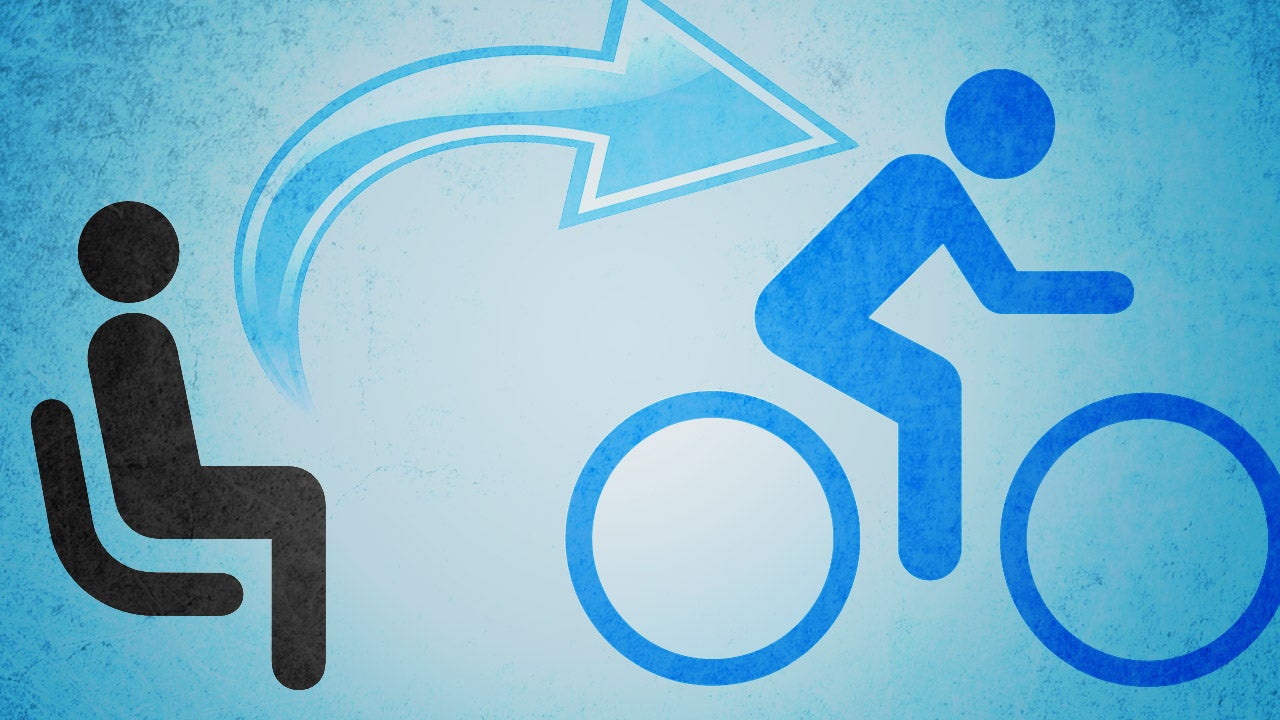Diet and exercise go hand-in-hand when you’re trying to lose
weight. (By ‘diet,’ I don’t mean that you need to starve yourself or follow
some fly-by-night fad diet. I simply mean that you should eat smaller portions,
and your meals should be balanced, consisting of healthy foods from every food
group.)
You may try only cutting down on all the high-calorie foods and skip the exercise. You may cut down on your portion sizes. And, the weight will eventually come off. However, if you also include exercise in your weight loss program, you’ll discover that not only will the weight come off, but your metabolism will improve, your fat will be replaced by lean, muscle tissue (rather than loose, jiggly flab), you’ll feel more energetic and mentally alert, and you’ll be better able to keep the fat off.
The human body was created to be active. It wasn’t meant to live a sedentary lifestyle. Unless your health prohibits you from getting some sort of exercise each day, you should make an attempt to focus on the amount of physical activity you engage in. After all, most Americans don’t get nearly enough physical exercise during the course of a day! We’re all too busy sitting at our desks or in front of our televisions.
By the same token, if you’re like the average American, who thrives on fast food or other high-fat, high-calorie meals, a change in eating habits is advised. You can still enjoy eating! But, if you’re serious about losing those extra pounds and keeping them off, you’re going to have to replace the greasy french fries with some healthy, fresh veggies. Instead of that 44 ounce Coke, drink more water. Try to include more fish in your diet, rather than a big, fat hamburger. You’ll be surprised at how much better you look and feel, when you replace those heart-clogging, fat-producing calories with healthier food choices.
And, don’t skip meals! If you regularly skip meals, your metabolism is going to slow down, you’ll feel sluggish, and your body is going to hang onto those extra pounds as protection against starvation. By eating regularly, your metabolism works better, and you’re better able to lose weight!
Yes, diet and exercise are important ingredients for successful weight loss! You don’t have to be miserable in the process of losing weight. Just remember the following points, if you want to shed those pounds and keep them off:
Don’t starve yourself! Eat regularly to ward off hunger. Focus on eating smaller portions (perhaps several small meals each day would work best for you).
Make sure that the calories you consume are nutritious and include foods from each food group.
Find an activity or two that you enjoy, so that exercise time isn’t dreaded. If you enjoy what you’re doing, you’ll be more likely to stick with your exercise routine.
A few healthy lifestyle changes can make all the difference in your physical, mental, and emotional well-being.
Note: Before beginning any diet or exercise program, consult your medical professional.
You may try only cutting down on all the high-calorie foods and skip the exercise. You may cut down on your portion sizes. And, the weight will eventually come off. However, if you also include exercise in your weight loss program, you’ll discover that not only will the weight come off, but your metabolism will improve, your fat will be replaced by lean, muscle tissue (rather than loose, jiggly flab), you’ll feel more energetic and mentally alert, and you’ll be better able to keep the fat off.
The human body was created to be active. It wasn’t meant to live a sedentary lifestyle. Unless your health prohibits you from getting some sort of exercise each day, you should make an attempt to focus on the amount of physical activity you engage in. After all, most Americans don’t get nearly enough physical exercise during the course of a day! We’re all too busy sitting at our desks or in front of our televisions.
By the same token, if you’re like the average American, who thrives on fast food or other high-fat, high-calorie meals, a change in eating habits is advised. You can still enjoy eating! But, if you’re serious about losing those extra pounds and keeping them off, you’re going to have to replace the greasy french fries with some healthy, fresh veggies. Instead of that 44 ounce Coke, drink more water. Try to include more fish in your diet, rather than a big, fat hamburger. You’ll be surprised at how much better you look and feel, when you replace those heart-clogging, fat-producing calories with healthier food choices.
And, don’t skip meals! If you regularly skip meals, your metabolism is going to slow down, you’ll feel sluggish, and your body is going to hang onto those extra pounds as protection against starvation. By eating regularly, your metabolism works better, and you’re better able to lose weight!
Yes, diet and exercise are important ingredients for successful weight loss! You don’t have to be miserable in the process of losing weight. Just remember the following points, if you want to shed those pounds and keep them off:
Don’t starve yourself! Eat regularly to ward off hunger. Focus on eating smaller portions (perhaps several small meals each day would work best for you).
Make sure that the calories you consume are nutritious and include foods from each food group.
Find an activity or two that you enjoy, so that exercise time isn’t dreaded. If you enjoy what you’re doing, you’ll be more likely to stick with your exercise routine.
A few healthy lifestyle changes can make all the difference in your physical, mental, and emotional well-being.
Note: Before beginning any diet or exercise program, consult your medical professional.
































